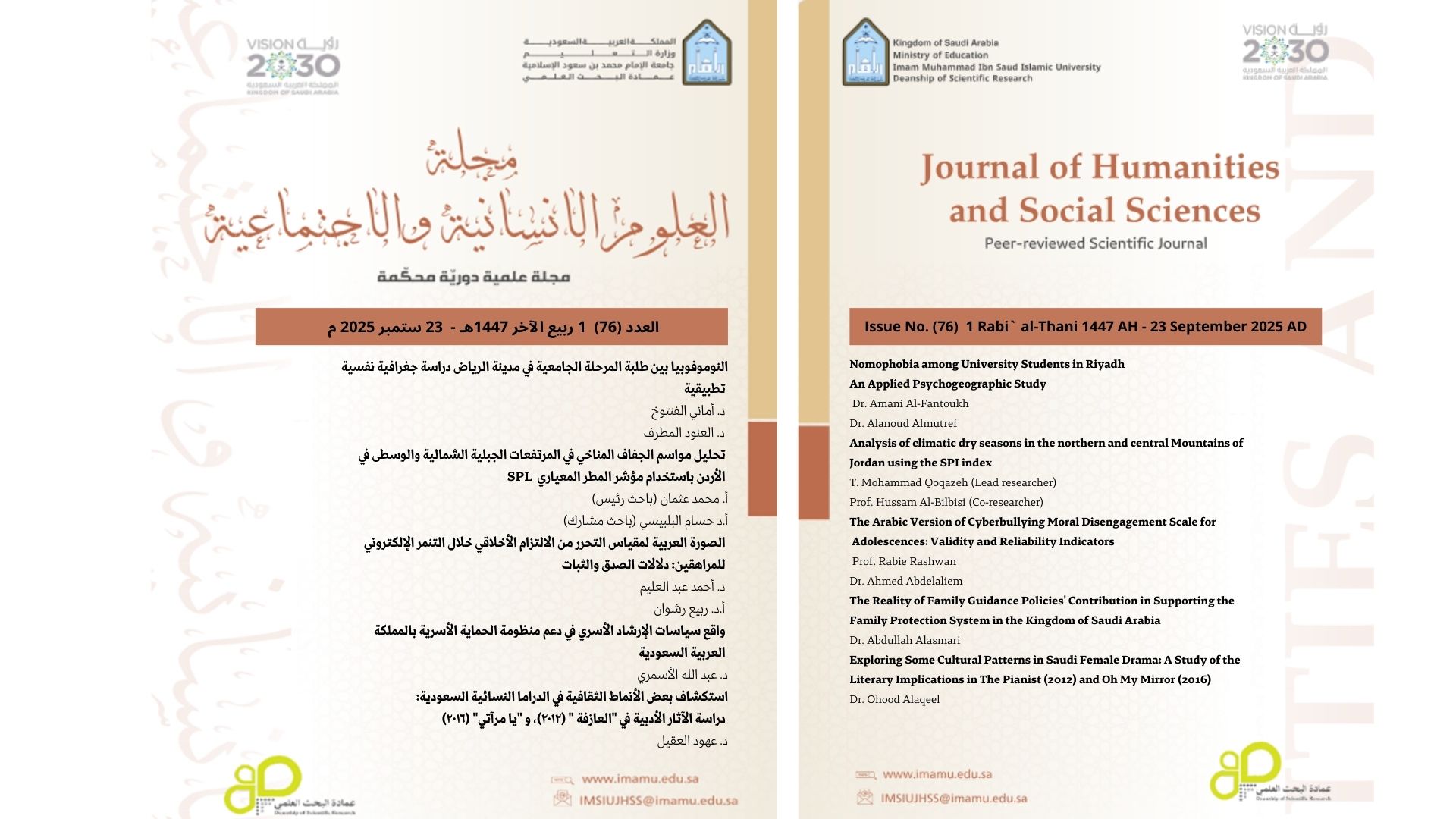الصورة العربية لمقياس التحرر من الالتزام الأخلاقي خلال التنمر الإلكتروني للمراهقين: دلالات الصدق والثبات
Keywords:
cyberbullying, Cyberbullying Moral Disengagement, adolescents, Validity, ReliabilityAbstract
The current research aims to Arabize and standardize the Cyberbullying Moral Disengagement Scale for adolescents, prepared by Bussey & Fitzpatrick in (2014), as the Arab environment is almost devoid of such a scale. After completing the translation of the scale’s items, it was applied to a sample consisting of 854 male and female students, ranging from 14.6 to 18.5 years old, in public education schools at the secondary level in the city of Buraidah in the Qassim Educational Region in the Kingdom of Saudi Arabia. Using appropriate statistical methods, the validity and reliability of the scale and the ability of its scores to discriminate between normal and bullying adolescents were confirmed. The validity and reliability indicators of the scale demonstrated good psychometric properties, confirming its suitability for use in the Arab environment. The correlation coefficients between the item scores and the total scale score, after excluding the item's score, ranged from 0.685 to 0.932, which are positive and statistically significant correlations at the 0.01 level. Additionally, the results of confirmatory factor analysis indicated high goodness-of-fit indices, with the X²/df=2.042, and the RMSEA =0.035. The reliability coefficients were high, with test-retest reliability 0.912, Cronbach's alpha= 0.968, and McDonald's Omega reliability coefficient=0.967. The findings also highlighted the scale's effectiveness in distinguishing between non-bullies and cyberbullies among adolescents in terms of moral disengagement mechanisms, with significant differences in favor of the bullies. Furthermore, the results indicated significant differences between male and female adolescent bullies, with males exhibiting higher moral disengagement. The researchers recommend using the current scale in future studies as well as verifying its psychometric properties on other samples.




